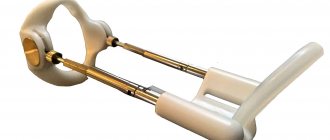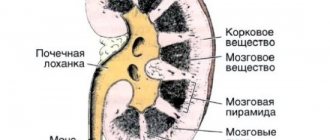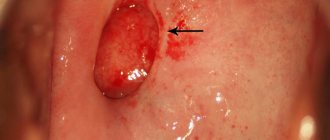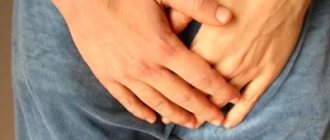Before surgery, carefully read the rules for preparing for surgery. In the third department of urology of the urology clinic of the First Moscow State Medical University. THEM. Sechenov introduced a program for early recovery of patients “ fast track ”
After your robotic prostatectomy surgery, you will wake up in the operating room or intensive care unit (ICU). You will stay in the intensive care unit until the next morning or in the evening of the same day you will be transferred to a ward. Relatives and visitors are not allowed to visit on the day of surgery. During the first hours after anesthesia, you will feel tired and drowsy. The first day after surgery, a pastel regime is prescribed to avoid early postoperative complications.
Discomfort or slight pain in the surgical area
Adequate anesthesia during robotic prostatectomy will avoid pain, which will contribute to the early activation of the patient.
IF YOU FEEL ACUTE PAIN IN THE SURGERY AREA, YOU SHOULD TELL YOUR ANESTHESIOLOGIST!
On the first day after the operation, slight discomfort in the area of port installation is possible (during robotic prostatectomy, 4-5 incisions up to 1 cm in size are made on the anterior abdominal wall and 1 incision is slightly larger, from where the prostate is evacuated after removal).
Restoring normal urination
Difficulty holding urine after catheter removal is normal. At first, patients have to wear special pads or diapers for adults. It is recommended to do the following exercise: while urinating, strain your muscles and try to hold the stream. This will help the muscles recover faster. At this stage of rehabilitation, the patient should not:
- lift weights;
- ride a bike;
- visit a bathhouse or sauna;
- perform heavy physical work;
- eat spicy and salty foods.
Drains
After robotic prostatectomy, a urethral catheter is installed to drain the bladder and quickly heal the vesicourethral anastomosis. The timing of installation of a urethral catheter varies from 4 to 7 days. In some cases, longer (up to 10-14 days) drainage of the bladder is required.
The emergency drainage (a tube that is installed in the surgical area for the purpose of evacuating the ichor) is removed as soon as there is no discharge through it.
At the Urology Clinic named after. R.M. Fronshtein of the First Moscow State Medical University named after. THEM. Sechenov, within the framework of “fast track surgery”, drainages are installed extremely rarely, which contributes to the early rehabilitation of patients.
You must be extremely careful with the catheter and safety drainage. Do not tighten the “tubes” under any circumstances; this can lead to serious complications. If the catheter stops functioning or falls out, you must inform your doctor.
Restoration of sexual function
A stable erection returns much more slowly than normal urination. At this stage, the patient should be patient. To rehabilitate potency after prostatectomy surgery, doctors advise doing the following:
- use tactile stimulation;
- when penetrating, use lubricant;
- try different types of sexual activity.
It is allowed to use auxiliary means: erection rings or medications to improve potency. For patients without improvement, doctors offer penile prosthetics. The procedure of penile prosthesis allows you to completely restore sexual function.
Our clinic’s specialists are ready to provide assistance in the treatment of erectile dysfunction after surgery. Experienced andrologists will select the optimal correction method and return you to the joy of a full intimate life. To schedule a consultation, call the numbers listed on the website.
Nutrition after robotic prostatectomy
On the day of surgery, patients are asked to refrain from eating. Liquid intake is allowed in small sips 3-4 hours after surgery. From the next day, the patient is prescribed a light diet with non-gas-forming foods to avoid excessive gas formation. You may be passing “gas”, which is an indication that your bowels are working. Early activation of the patient, the faster the patient gets out of bed and begins to walk, the faster the intestines “start” and stool is achieved, usually 2-3 days after surgery. After the first bowel movement, you can go back to your normal diet, but you should avoid constipation!! If stool is not achieved within three days, you must inform your doctor.
Radical prostatectomy
What is radical prostatectomy and who is it indicated for? How effective is radical prostatectomy (removal of the prostate gland) for prostate cancer? What should a patient choose: traditional “open” prostatectomy or laparoscopic? What are the possible negative consequences of radical prostatectomy? What are the advantages of NCG Oncourology in the surgical treatment of prostate cancer?
— It is known that for prostate cancer, the main treatment method is its removal. What is radical prostatectomy and who is it indicated for?
- Let's make a clarification right away. Removing the prostate allows the patient to be free of cancer in cases where the tumor has not spread beyond the prostate gland. Radical prostatectomy is a surgical procedure during which the prostate gland and seminal vesicles are removed. In some cases, the pelvic lymph nodes are also removed (lymphadenectomy). A number of studies, such as prostate biopsy, MRI of the pelvic organs, osteoscintigraphy and lung radiography, allow us to understand whether the tumor has spread beyond the boundaries of the prostate; will surgery help? If the tumor is limited to the prostate gland and does not invade surrounding organs, then most often we recommend the patient a radical prostatectomy as a salvage operation.
Laparoscopic prostate removal: video.
— How effective is radical prostatectomy? Does this operation rid the patient of cancer, or only prolong his life?
— Look, at the present stage of treatment for prostate cancer, a lot of methods are offered: brachytherapy, external irradiation, chemotherapy and hormonal therapy. Each of these methods has its place in the treatment of prostate cancer, however, only radical removal of the prostate in the first and second stages makes it possible with a very high degree of probability to save a person from prostate cancer. The operation is even called: “Salvage” (saving) removal of the prostate.” Moreover, we often begin the operation with the stage of removing the pelvic lymph nodes - lymphadenectomy. Even if urgent histological examination shows that there are metastases in the removed lymph nodes, we prefer to continue the operation and still remove the prostate gland. Firstly, this improves the prognosis, secondly, the patient avoids complications of tumor growth (urinary retention, pain, etc.), thirdly, he will not need to subsequently undergo irradiation of the prostate area with side effects in the form of severe radiation inflammation of the bladder (radiation cystitis) and damage to the rectum (radiation proctitis). Both of these complications dramatically spoil the patient’s quality of life; a lot of effort is required from both the doctor and the patient to level the symptoms of radiation cystitis and proctitis. We can say that the effectiveness of radical prostatectomy is very high in the first and second stages of prostate cancer, and is quite high even in the presence of micrometastases in the lymph nodes.
| Prostate | Prostate gland removed, nerves preserved | The urethra and bladder are connected to each other. |
— It is known that the prostate can be removed either with a large incision, so to speak, by performing a traditional abdominal operation, or laparoscopically. What do you advise the patient to choose?
— The NKG Oncourology has accumulated extensive experience in performing both laparoscopic and traditional abdominal operations. Both methods have their advantages and disadvantages. If the patient has not previously undergone surgery on the abdominal organs, if he does not have dilation of the pelvic veins, in a word, if there are no factors that turn the laparoscopic version of the operation into “surgery for the sake of surgery and the surgeon’s vanity,” then we will offer laparoscopic surgery. Less blood loss, no risk of postoperative hernia, no pain after surgery, quick recovery, better visualization - all this speaks in favor of laparoscopic surgery. But you must admit, going for any operation laparoscopically when you know that it is more dangerous for the patient than open surgery is stupid and indecent. Therefore, being staunch supporters of minimally invasive surgery, we do not refuse open surgery. There are quite a few cases when abdominal surgery is indicated. We always resolve this issue with the patient, based on individual characteristics, discussing with him all the risks, disadvantages and advantages.
— What are the possible negative consequences of radical prostatectomy?
— Most often, the short answer to this question is “erectile dysfunction and urinary incontinence.” If you look in more detail, you need to understand: removal of the prostate, both open and laparoscopic, is an operation of a high category of complexity. Therefore, we at the NKG Oncourology adopted the so-called. “gold standard” of preoperative examination of the patient, which allows to protect him from early and late postoperative complications. As for erectile dysfunction and urinary incontinence, these complications arise due to damage to the neurovascular bundles that provide erection and urinary retention. Unfortunately, this damage is inevitable in some cases; moreover, we excise the neurovascular bundles intentionally, with the goal of maximizing radical removal of the tumor. This surgical option is called “radical prostatectomy without nerve sparing.” However, firstly, at the minimum possible, if the oncological situation allows, we perform nerve-sparing prostatectomy, which allows us to do without urinary incontinence and erectile dysfunction, and secondly, both of these complications are completely correctable.
— What is the advantage of surgical treatment of prostate cancer in the NKG Oncourology?
— By creating the NCG of Oncourology, we set ourselves the goal of offering the patient high-quality treatment from experienced specialists. We always conduct a preliminary consultation with a urologist, oncologist, chemotherapy and radiologist for each patient.
— Our other advantages are: – European “gold standard” of preoperative examination, ensuring patient safety – Experience in performing both open and laparoscopic prostatectomy, specialists trained in Europe – High-quality anesthesiological and resuscitation support – Operating rooms, equipped predominantly with German (“Karl Storz” " and "Richard Wolf") and Japanese ("Olympus") equipment.
“However, perhaps the most important advantage of the group, I would say, is the sequence of treatment and rehabilitation: from the moment of diagnosis and right up to psychological rehabilitation (if the latter is required), we are always close to the patient.
Postoperative period
Upon completion of the operation, the prostate is sent for histological examination. If the study shows a high cancer risk, additional radiation or hormonal therapy is prescribed in order to reduce relapse.
Immediately after the operation, the patient is transferred to the intensive care unit, where he spends the first day. Doctors monitor blood tests, ECGs, and perform ultrasounds. In most cases, the man does not experience pain; only limited discomfort appears at the site of the postoperative wounds.
During laparoscopic prostatectomy, the patient is given a urethral catheter through which urine flows out. It ensures normal fusion of the anastomosis, excluding urine from entering the stitching area. After 5-6 days, the man needs to have an x-ray with contrast to make sure that the tissues have fused. After this, the catheter is removed and the sutures are removed.
Almost every patient, after removing the catheter, experiences temporary urinary incontinence (when coughing, standing up, laughing). Perineal muscle training helps to completely get rid of this inconvenience.
If a man wants to preserve erectile function, the operation uses a nerve-sparing technique that helps avoid damage to the neurovascular bundles around the prostate capsule. The method is allowed only with low cancer risk and is not combined with lymphadenectomy. With complete preservation of the nerve bundles, at first there may be a weakened erection.








